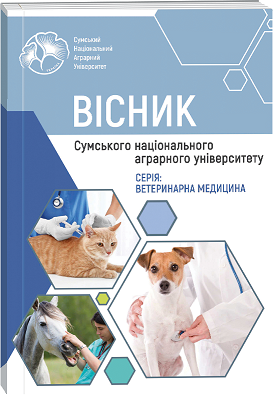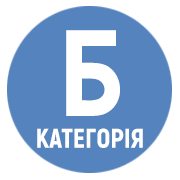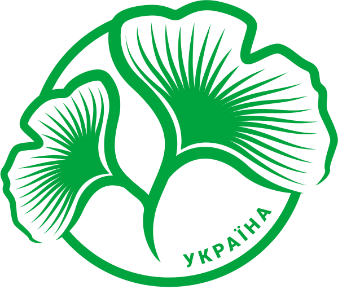РОЛЬ ОРГАНІЧНИХ КОМПЛЕКСІВ МІДІ, МАРГАНЦЮ, ЦИНКУ В ПІДВИЩЕННІ ПРОДУКТИВНОСТІ КУРЕЙ
Анотація
Концентрації міді та марганцю в інгредієнтах, які зазвичай використовуються в кормах для бройлерів, є низькими та зазвичай недостатніми для задоволення потреб у харчуванні. Джерела неорганічних мінералів, таких як сульфати та оксиди, широко використовуються завдяки їх високій комерційній доступності та низькій ціні. Однак відомо, що сульфати мають низьку біодоступність через їх високу розчинність у водному середовищі та антагоністичні взаємодії з іншими мінералами та поживними речовинами в раціоні. Це дослідження присвячено визначенню впливу хелатних металів на продуктивність курчат. З числа методів дослідження використовувалися абстрагування, аналіз і синтез, моделювання, а також методи емпіричного дослідження, зокрема, спостереження за птицею та порівняння результатів, вимірювання показників, експеримент. У рамках проведеного дослідження а період перших семи днів не було зафіксовано суттєвих розбіжностей щодо споживання корму птицею контрольної та експериментальної груп. На восьмий день у птиці, яка перебувала на контрольному раціоні, що включав мікроелементи Zn, Mn, Cu у незначній кількості, почало відбуватися зниження рівня споживання кормів, що в подальшому привело до зменшення показників росту тіла, тобто з’явилися симптоми дефіциту мікроелементів. На приріст живої маси та коефіцієнт конверсії корму позитивно впливали органічні добавки, однак, не було виявлено істотної різниці (P > 0,05) щодо приросту маси тіла між органічними мікроелементами та неорганічним контролем. У середньоорганічному раціоні коефіцієнт конверсії корму (P <0,01) був вищим, ніж при контрольному раціоні завдяки відносно меншому споживанню корму. В умовах надання високоорганічного раціону не було отримано додаткових даних щодо приросту живої маси та коефіцієнту конверсії корму. Щодо виділення мікроелементів, то екскреція Zn, Mn, Cu мала тенденцію до зростання (P <0,001) відповідно до збільшення споживання вищезазначених мікроелементів. Птиця, яка перебувала на середньоорганічному раціоні виявляла нижчу (P < 0,001) екскрецію мікроелементів порівняно з птицею, яка була на високоорганічному раціоні. Результати дослідження показали, що добавка з 4 мг Cu та 40 мг Mn та Zn з органічних джерел може бути достатньою для нормального росту птиці у двадцятиденному періоді. Використання у кілька разів меншої кількості органічних мікроелементів у раціонах птиці дозволить уникати високого рівня екскреції мікроелементів в навколишнє середовище.
Посилання
2. Abdel-Moneim, E.-M., Shehata, A. M., Khidr, R. E., Paswan, V. K., Ibrahim, N. S., El-Ghoul, A. A., Aldhumri, S. A., Gabr, S. A., Mesalam, N. M., Elbaz, A. M., Elsayed, M. A., Wakwak, M. M., & Ebeid, T. A. (2021). Nutritional manipulation to combat heat stress in poultry – A comprehensive review. Journal of Thermal Biology, 98, 102915. https://doi.org/10.1016/j.jtherbio.2021.102915
3. Alizadeh, M., Shojadoost, B., Astill, J., Taha-Abdelaziz, K., Karimi, S. H., Bavananthasivam, J., Kulkarni, R. R., & Sharif, S. (2020). Effects of in ovo Inoculation of Multi-Strain Lactobacilli on Cytokine Gene Expression and Antibody-Mediated Immune Responses in Chickens. Frontiers in veterinary science, 7, 105. https://doi.org/10.3389/fvets.2020.00105
4. Ammerman, C. B. (1995). Methods for estimation of mineral bioavailability. In C. B. Ammerman, D. H. Baker, & A. J. Lewis (Eds.), Bioavailability of nutrients for animals: Amino acids, minerals, and vitamins (pp. 83–94). Academic Press.
5. Ansari, M. (2024). Recent strategies to mitigate reproductive aging in male broiler breeders: A review. Animal Reproduction Science, 268, 107570. https://doi.org/10.1016/j.anireprosci.2024.107570
6. Aparecida Martins, R., de Almeida Assunção, A. S., Cavalcante Souza Vieira, J., Campos Rocha, L., Michelin Groff Urayama, P., Afonso Rabelo Buzalaf, M., Roberto Sartori, J., & de Magalhães Padilha, P. (2024). Metalloproteomic analysis of liver proteins isolated from broilers fed with different sources and levels of copper and manganese. Scientific reports, 14(1), 4883. https://doi.org/10.1038/s41598-024-55478-8
7. Bakhshalinejad, R., Torrey, S., & Kiarie, E. G. (2024). Comparative efficacy of hydroxychloride and organic sources of zinc, copper, and manganese on egg production and concentration of trace minerals in eggs, plasma, and excreta in female broiler breeders from 42 to 63 weeks of age. Poultry science, 103(4), 103522. https://doi.org/10.1016/j.psj.2024.103522
8. Bonaventura, P., Benedetti, G., Albarède, F., & Miossec, P. (2015). Zinc and its role in immunity and inflammation. Autoimmunity Reviews, 14(4), 277–285. https://doi.org/10.1016/j.autrev.2014.11.008
9. Burrell, A. L., Dozier, W. A., Davis, A. J., Compton, M. M., Freeman, M. E., Vendrell, P. F., & Ward, T. L. (2004). Responses of broilers to dietary zinc concentrations and sources in relation to environmental implications. British Poultry Science, 45(2), 225–263. https://doi.org/10.1080/00071660410001715867
10. Ciszewski, A., Jarosz, Ł. S., Michalak, K., Marek, A., Grądzki, Z., Wawrzykowski, J., Szymczak, B., & Rysiak, A. (2024). Proteome and Peptidome Changes and Zn Concentration in Chicken after In Ovo Stimulation with a Multi-Strain Probiotic and Zn-Gly Chelate: Preliminary Research. Current issues in molecular biology, 46(2), 1259–1280. https://doi.org/10.3390/cimb46020080
11. da Cruz Ferreira Júnior, H., da Silva, D. L., de Carvalho, B. R., de Oliveira, H. C., Cunha Lima Muniz, J., Junior Alves, W., Eugene Pettigrew, J., Eliza Facione Guimarães, S., da Silva Viana, G., & Hannas, M. I. (2022). Broiler responses to copper levels and sources: growth, tissue mineral content, antioxidant status and mRNA expression of genes involved in lipid and protein metabolism. BMC veterinary research, 18(1), 223. https://doi.org/10.1186/s12917-022-03286-5
12. Dai, D., Wu, S. G., Zhang, H. J., Qi, G. H., & Wang, J. (2020). Dynamic alterations in early intestinal development, microbiota and metabolome induced by in ovo feeding of L-arginine in a layer chick model. Journal of animal science and biotechnology, 11, 19. https://doi.org/10.1186/s40104-020-0427-5
13. Dozier, W. A., Davis, A. J., Freeman, M. E., & Ward, T. L. (2003). Early growth and environmental implications of dietary zinc and copper concentrations and sources of broiler chicks. British Poultry Science, 44(6), 726–731.
14. Dunislawska, A., Slawinska, A., Stadnicka, K., Bednarczyk, M., Gulewicz, P., Jozefiak, D., & Siwek, M. (2017). Synbiotics for Broiler Chickens-In Vitro Design and Evaluation of the Influence on Host and Selected Microbiota Populations following In Ovo Delivery. PloS one, 12(1), e0168587. https://doi.org/10.1371/journal.pone.0168587
15. Franklin, S. B., Young, M. B., & Ciacciariello, M. (2022). The Impact of Different Sources of Zinc, Manganese, and Copper on Broiler Performance and Excreta Output. Animals : an open access journal from MDPI, 12(9), 1067. https://doi.org/10.3390/ani12091067.
16. Geng, Y., Sun, X., Lu, L., Lin, X., Liao, X., Zhang, L., Wang, R., & Luo, X. (2022). Effect of in ovo manganese injection on the embryonic development, antioxidation, hatchability, and performances of offspring broilers under normal and high temperatures. Poultry science, 101(8), 101936. https://doi.org/10.1016/j.psj.2022.101936
17. Hedlund, L., Palazon, T., & Jensen, P. (2021). Stress during Commercial Hatchery Processing Induces Long-Time Negative Cognitive Judgement Bias in Chickens. Animals : an open access journal from MDPI, 11(4), 1083. https://doi.org/10.3390/ani11041083
18. Hu, Y., Chen, Z., Lu, L., Zhang, L., Liu, T., Luo, X., & Liao, X. (2022). Determination of dietary copper requirement by the monoamine oxidase activity in kidney of broilers from 1 to 21 days of age. Animal nutrition (Zhongguo xu mu shou yi xue hui), 8(1), 227–234. https://doi.org/10.1016/j.aninu.2021.05.013
19. Huang, L., Li, X., Wang, W., Yang, L., & Zhu, Y. (2019). The Role of Zinc in Poultry Breeder and Hen Nutrition: an Update. Biological trace element research, 192(2), 308–318. https://doi.org/10.1007/s12011-019-1659-0
20. Jarosz, Ł. S., Michalak, K., Marek, A., Hejdysz, M., Ciszewski, A., Kaczmarek, S., Kwiecień, M., & Grądzki, Z. (2022). The effect of feed supplementation with zinc glycine chelate and zinc sulphate on hepatic proteome profiles in chickens. Livestock Science, 262, 104983. https://doi.org/10.1016/j.livsci.2022.104983
21. King, J. C., Shames, D. M., & Woodhouse, L. R. (2000). Zinc homeostasis in humans. Journal of Nutrition, 130(5), 1360S–1366S.
22. Kucuk, O., Sahin, N., & Sahin, K. (2003). Supplemental zinc and vitamin A can alleviate negative effects of heat stress in broiler chickens. Biological Trace Element Research, 94, 225–235. https://doi.org/10.1385/BTER:94:3:225
23. Martins, R. A., Assunção, A. S. A., Vieira, J. C. S., Rocha, L. C., Urayama, P. M. G., Buzalaf, M. A. R., Sartori, J. R., & Padilha, P. M. (2023). Proteomic Study of Broiler Plasma Supplemented with Different Levels of Copper and Manganese from Different Sources. Molecules (Basel, Switzerland), 28(24), 8155. https://doi.org/10.3390/molecules28248155
24. Olukosi, O. A., van Kuijk, S., & Han, Y. (2018). Copper and zinc sources and levels of zinc inclusion influence growth performance, tissue trace mineral content, and carcass yield of broiler chickens. Poultry science, 97(11), 3891–3898. https://doi.org/10.3382/ps/pey247
25. Saleh, A. A., Ragab, M. M., Ahmed, E. A. M., Abudabos, A. M., & Ebeid, T. A. (2017). Effect of dietary zincmethionine supplementation on growth performance, nutrient utilization, antioxidative properties and immune response in broiler chickens under high ambient temperature. Journal of Applied Animal Research, 46(1), 820–827. https://doi.org/10.1080/09712119.2017.1407768
26. Salim, H. M., Lee, H. R., Jo, C., Lee, S. K., & Lee, B. D. (2012). Effect of dietary zinc proteinate supplementation on growth performance, and skin and meat quality of male and female broiler chicks. British Poultry Science, 53(1), 116–124. https://doi.org/10.1080/00071668.2012.658757
27. Van Poucke, E., Suchánková, H., & Jensen, P. (2023). Commercial hatchery processing may affect susceptibility to stress in laying hens. PloS one, 18(9), e0291324. https://doi.org/10.1371/journal.pone.0291324
28. Wen, A., Dai, S., Wu, X., & Cai, Z. (2019). Copper bioavailability, mineral utilization, and lipid metabolism in broilers. Czech Journal of Animal Science, 64(12). https://cjas.agriculturejournals.cz/pdfs/cjs/2019/12/02.pdf
29. Wu, X., Zhu, M., Jiang, Q., & Wang, L. (2020). Effects of Copper Sources and Levels on Lipid Profiles, Immune Parameters, Antioxidant Defenses, and Trace Element Residues in Broilers. Biological trace element research, 194(1), 251–258. https://doi.org/10.1007/s12011-019-01753-z
30. Zarghi, H., Golian, A., Hassanabadi, A., & Khaligh, F. (2022). Effect of zinc and phytase supplementation on performance, immune response, digestibility and intestinal features in broilers fed a wheat-soybean meal diet. Italian Journal of Animal Science, 21(1), 430–444. https://doi.org/10.1080/1828051X.2022.2034061
31. Zhang, L., Wang, Y. X., Xiao, X., & et al. (2017). Effects of zinc glycinate on productive and reproductive performance, zinc concentration, and antioxidant status in broiler breeders. Biological Trace Element Research, 178(2), 320–326. https://doi.org/10.1007/s12011-016-0928-4
32. Zhu, Z., Yan, L., Hu, S., An, S., Lv, Z., Wang, Z., … Zhang, A. (2019). Effects of the different levels of dietary trace elements from organic or inorganic sources on growth performance, carcass traits, meat quality, and faecal mineral excretion of broilers. Archives of Animal Nutrition, 73(4), 324–337. https://doi.org/10.1080/1745039X.2019.1620050

 ISSN
ISSN  ISSN
ISSN 



